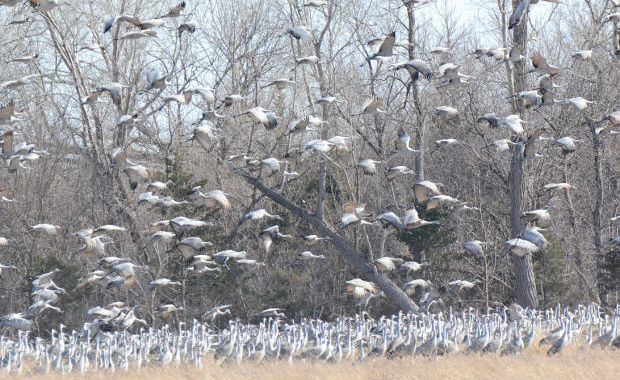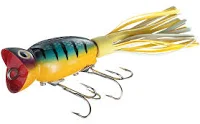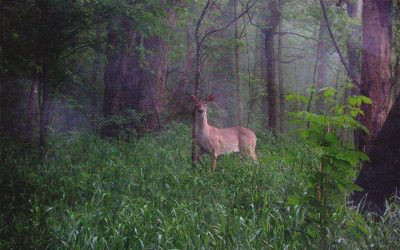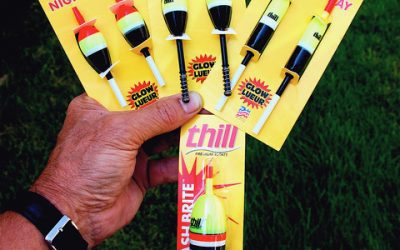Reprinted from the Sioux City Journal.
GRAND ISLAND, Neb. | They came in at mid day on tired wings. Flock after flock after flock of large gray birds trailing long, black legs. They swung over the Platte River as if checking to see if it were still there.
Then they glided away toward nearby fields where they would alight with hundreds, if not thousands, of their own kind.
Most had ridden the strong southerly winds probably all the way from Texas or beyond where they had spent the winter. Now their inner clocks were pushing them northward.
This was the famed sandhill crane migration.
Fran and I were here on a spur of the moment whim. We had never seen the migrating cranes. After a little research on the Internet we grabbed our cameras and left. People from around the world gather to observe this phenomenon which takes place along a 40-mile stretch of the Platte between Kearney and Grand Island. Some 500,000 cranes will pass through here each spring. That’s about 90 percent of the world’s population.
Crane watching is so popular here that it is estimated to bring more than $10.3 million to the local economy,
The early arrivals drift in from mid to late February. March finds new flocks arriving each day, peaking sometime between mid and late March. The last birds leave in early April.

This is just a small part of one flock of cranes resting on a grassland just off of one of the channels of the North Platte River. As we watched, hundreds more birds dropped in.
They settle in along the river to rest and feed, building their strength for the next part of the migration.
The shallow waters of the Platte provide perfect roosting areas for the cranes. This is where they spend the night. During the day they fly to nearby cornfields or pastures where they loaf and feed until evening when they return to the river. During their stay here they may add as much as 20 percent of their 8- to 12-pound weight gorging on corn left in fields after harvest.
While blinds and formal tours are available, we decided to just drive the countryside and observe the cranes in the fields. It didn’t take long to find the first flock. They were resting and feeding in a pasture in numbers so thick they looked like a gray smear on the winter-dead grasses.
They were too far out for a good picture in spite of the fact that I carried a 600 mm lens on my DSLR.
And during our two-day visit, it became clear that cranes do not feed near the roads. They are wary of humans, but will tolerate automobiles as long there is a good distance between them and the car. Binoculars or even spotting scopes will be needed to get a good look at them.
The cranes are big birds, 3- to 4-feet tall with a wingspan of 6 feet. During migration they will fly 170 to 450 miles a day. Some will nest as far north as the Arctic and Siberia. Others will take up residence in Canada, Northwest Territories and Alaska. A few do nest in the United States.
Their loud, trilling call can be heard as far away as two miles. They mate for life and can live twenty years or more.
For our first day, we decided to divide the over-40 miles of river into east and west areas. We explored the east side first. Our first stop was at the Crane Trust Nature Center just on the south side of Interstate 80 at exit 305. Here you can learn a lot about the crane migration, take tours and hiking trails and see a herd of buffalo. The trust currently owns or manages approximately 10,000 acres of riverine, wetland and grassland habitat used by sandhill and whooping cranes. Check out their web site at www.cranetrust.org.
The second day, we visited the Audubon’s Rowe Sanctuary which is about two miles south and two miles west of Exit 285. Created in 1974, the sanctuary protects habitat for sandhill cranes and other wildlife along nearly 1,950 acres of river channel, upland and agriculture lands.
Tours and photographic blinds are available here as well. Check out their web site at www.rowesanctuary.org . They also have a live crane cam which can be linked though the website.
We found the staffs at both places to be very helpful and knowledgeable about the cranes and the area. Registrations should be made for the guided tours and overnight photography blinds.
Other good online sites include: www.nebraskaflyway.com and www.nebraskatravels.com. Good crane viewing should exist here well into April this year. It’s one of the greatest wildlife spectacles in the United States. If viewing the crane migration is not on your bucket list, it should be.





0 Comments